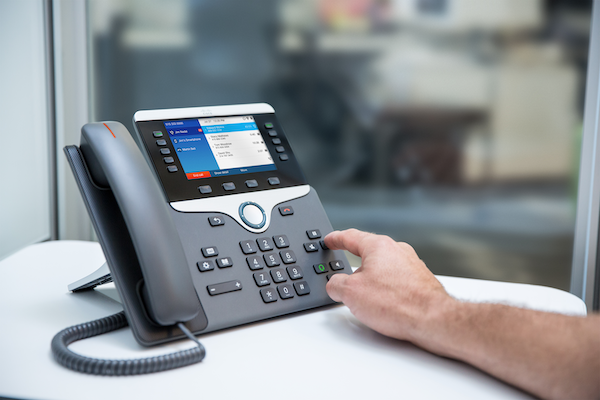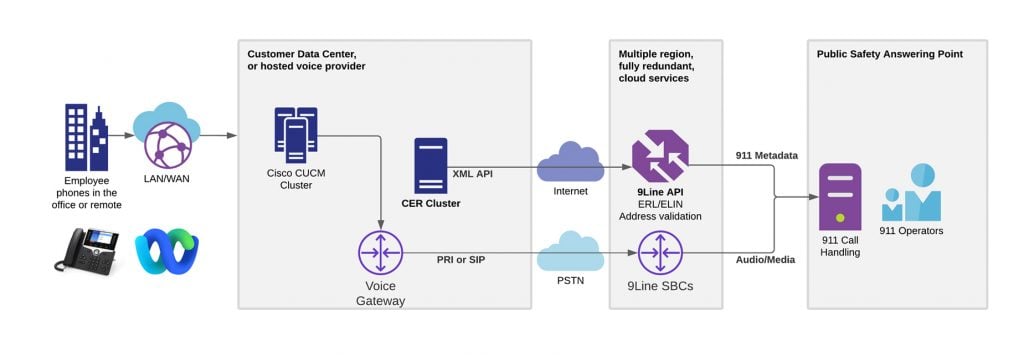9Line for Cisco Emergency Responder (CER)
9Line for Cisco® Emergency Responder helps Cisco Collaboration customers in the United States and Canada meet the evolving state and federal regulatory requirements, protect your existing telephony investment, and achieve compliance with affordable licensing complementing your existing telephony licensing. Download the 9Line for CER Datasheet to learn more about the features and call architecture below.
Datasheet
Uncompromising Affordability

Our tier-based licensing allows organizations to select an appropriate feature set based on their requirements.
SSO & API Ready

Customers have the ability to utilize Single Sign-On and APIs to further improve efficiency, usability, and security with all 9Line integrations.
HELD Location Switching

Users with Webex registered to CUCM have the ability to utilize automatic location switching with HELD.
No DID's Required

Customers are not required to purchase DID numbers since 9Line can keep CER in place and swap the real DID's from ELIN configurations.
How it works

Before the Emergency Call
• End-user devices are tracked through the Cisco Emergency Responder (CER) MAC Address, IP Subnet, or Wi-Fi access point methods, when on-premises.
• Organizations using Webex will have the ability to utilize HELD for setting user locations.
• Granular dispatchable location address information for both on-premises and off-premises users is validated and synchronized with 9Line by CER, then stored and ready to be assigned when a 911 call is made.
When an Emergency Call Occurs
• Cisco Emergency Responder will perform its standard operations of changing the calling party number and selecting the correct route pattern to send the call to 9Line.
• Cisco Unified Communications Manager will use the selected route pattern to route the call.
• The customer gateway (CUBE or other SBC) sends the 911 call over the top via the Internet, securely encrypted if desired, to the highly available, active-active, 9Line session border controllers.
• 9Line inserts metadata containing the address information set earlier by the user or the administrator.
• The call is presented to the responsible PSAP with the dynamic metadata information.
In Case of Disconnect
• The PSAP will attempt to callback the number CER has assigned for the emergency call. In the case of on-premises phones, this is the ELIN. For off-premises users, CER requires assigning a unique DID to the user. This callback occurs via the customer’s regular PSTN (PRI/SIP) service.
Download the 9Line for CER datasheet for more technical specifications.
Datasheet
Interested in learning more? Register for 9Line's webinar series!
Click Here if you are a reseller and are interested in joining our program!

COPYRIGHT 2020-2025. ALL PRODUCT AND COMPANY NAMES ARE ™ OR ® TRADEMARKS OF THEIR RESPECTIVE OWNERS. UNAUTHORIZED USE NOT PERMITTED.
